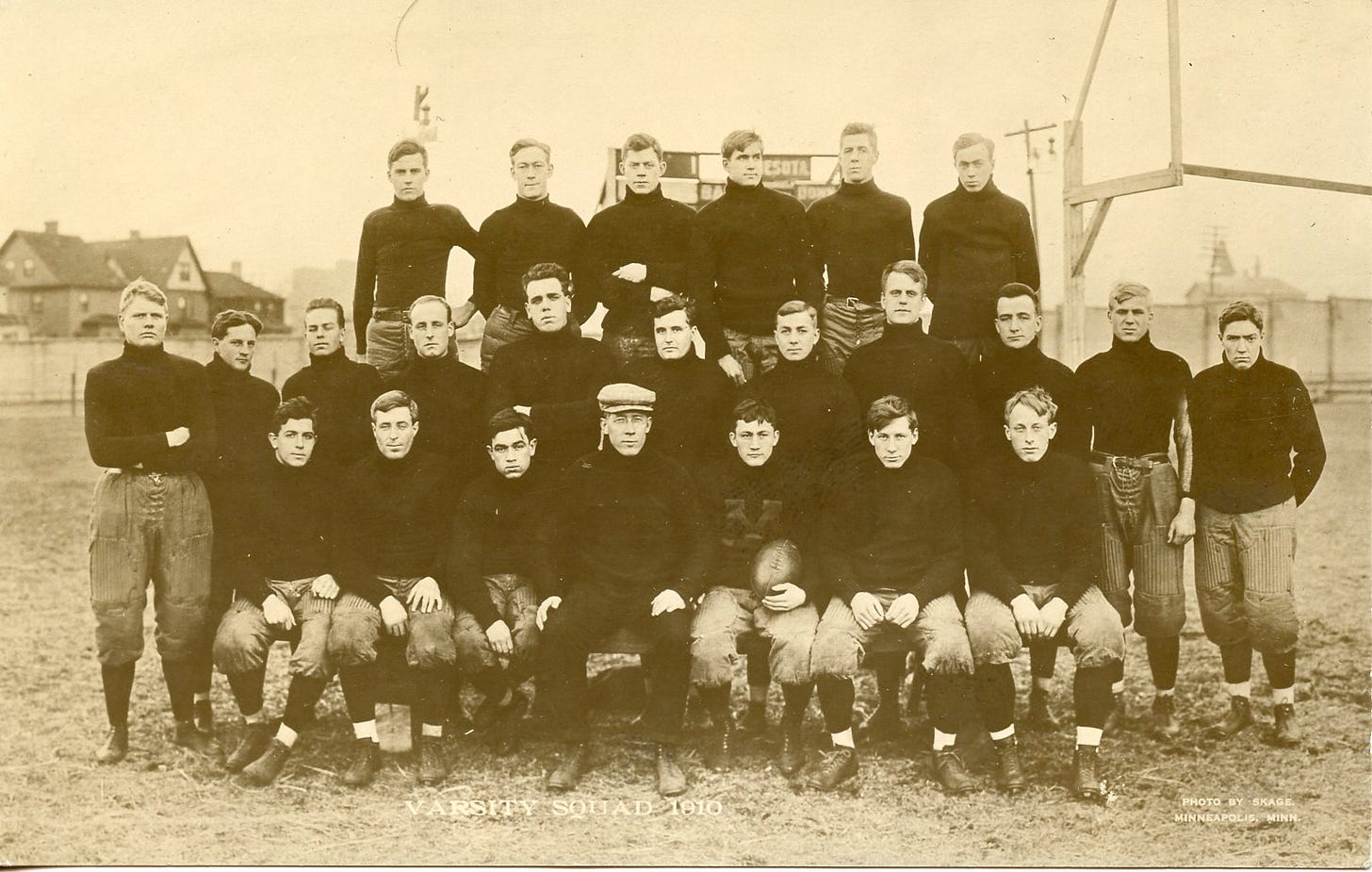Today's Tidbit... Win Two, Claim A Conference Championship
An article from two weeks ago discussed the 1932 NFL season and how tie games did not count when calculating the team win percentages that determined league or conference championships. In that example, the 10-3-4 Green Bay Packers sat behind the 6-1-6 Chicago Bears and the 6-1-4 Portsmouth Spartans in the standings.
Similar situations occurred in college conferences when travel and other difficulties resulted in highly unbalanced conference schedules. Top-level teams often filled the first half of their schedules with lesser teams from the same or neighboring states and then played a handful of conference games. Not to pick on Minnesota, but it's fun since they provide an excellent example by claiming twelve Big Ten or predecessor conference (Intercollegiate Athletic Association of the Northwest and Western Conference) championships before 1934. Minnesota won only two conference games in three of those twelve championship seasons. They won three conference games in the other nine seasons and tied a conference game in five of those three-win seasons. Since tie games did not count as a half-win and half-loss as they commonly do today, Minnesota could claim a perfect record.
The column showing teams tying with Minnesota in seven championship seasons illustrates the double whammy of not counting ties in the win percentage calculation and teams playing a limited number of conference games.
For example, should any of Wisconsin, Minnesota, and Michigan claim a conference championship in 1906? (Big Ten teams played only five games per season after the 1905 football crisis.) Likewise, were Minnesota and Michigan's conference records really equal in 1933?
It all seems silly, but let's drill into Minnesota's 1910 team to show the details. That team opened with wins over Lawrence and South Dakota, followed by Iowa State and Nebraska, all at home. The Gophers then won at Chicago and bested Wisconsin at home. All six wins were by shutout, which tells us Minnesota was a pretty good team. Nevertheless, the last game of the season was a loss at Michigan. Since Nebraska did not join the Big Ten until 101 years later, and the self-proclaimed Champions of the West were not Western Conference members from 1907 through 1916, Minnesota claimed a conference championship after playing only two conference games against lesser opponents. Chicago went 2-4 in the conference and 2-5 overall, while the Badgers were 1-2-1 in the conference and 1-2-2 overall.
As pointed out with Chicago and Wisconsin’s losing records, the win percentage calculation also did not account for the strength of the schedule. So, while many schools glory in the past, claiming conference championships based on winning two or three games in a year, we should view those accomplishments with a healthy dose of skepticism.
Football Archaeology is reader-supported. Click here to buy one of my books or otherwise support the site.



